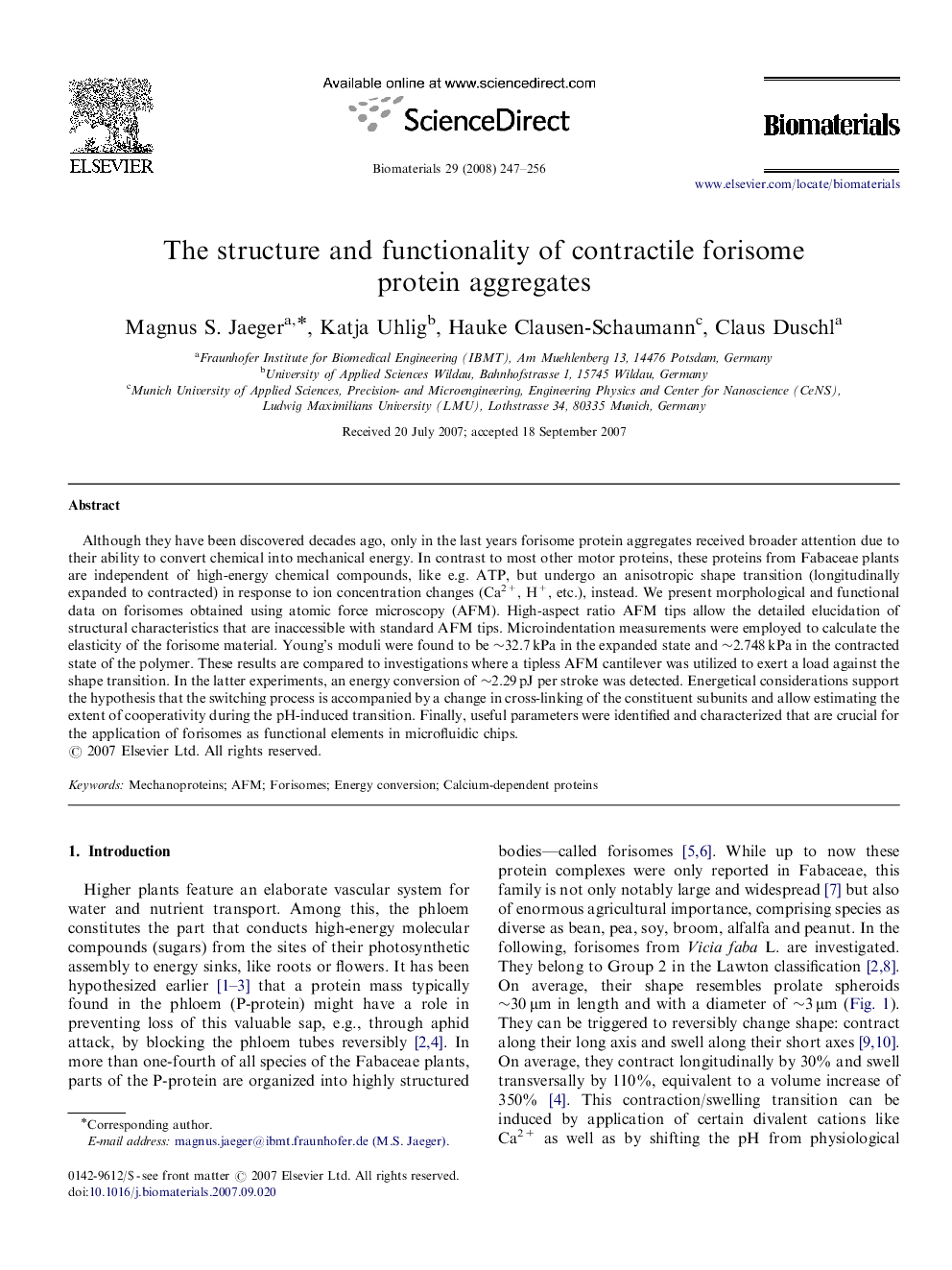| کد مقاله | کد نشریه | سال انتشار | مقاله انگلیسی | نسخه تمام متن |
|---|---|---|---|---|
| 11353 | 734 | 2008 | 10 صفحه PDF | دانلود رایگان |

Although they have been discovered decades ago, only in the last years forisome protein aggregates received broader attention due to their ability to convert chemical into mechanical energy. In contrast to most other motor proteins, these proteins from Fabaceae plants are independent of high-energy chemical compounds, like e.g. ATP, but undergo an anisotropic shape transition (longitudinally expanded to contracted) in response to ion concentration changes (Ca2+, H+, etc.), instead. We present morphological and functional data on forisomes obtained using atomic force microscopy (AFM). High-aspect ratio AFM tips allow the detailed elucidation of structural characteristics that are inaccessible with standard AFM tips. Microindentation measurements were employed to calculate the elasticity of the forisome material. Young's moduli were found to be ∼32.7 kPa in the expanded state and ∼2.748 kPa in the contracted state of the polymer. These results are compared to investigations where a tipless AFM cantilever was utilized to exert a load against the shape transition. In the latter experiments, an energy conversion of ∼2.29 pJ per stroke was detected. Energetical considerations support the hypothesis that the switching process is accompanied by a change in cross-linking of the constituent subunits and allow estimating the extent of cooperativity during the pH-induced transition. Finally, useful parameters were identified and characterized that are crucial for the application of forisomes as functional elements in microfluidic chips.
Journal: Biomaterials - Volume 29, Issue 2, January 2008, Pages 247–256